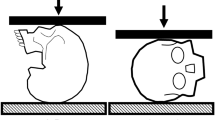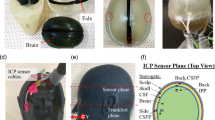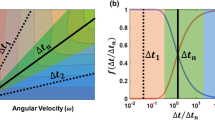Abstract
This study presents an original numerical human head model followed by there modal and temporal validation against human head vibration analysis in vivo and cadaver impact tests. The human head FE model developed by ULP presents two particularities : one at the brain-skull interface level were fluid-structure interaction is taken into account, the other at the skull modelling level by integrating the bone fracture simulation. Validation shows that the model correlated well with a number of experimental cadaver tests and predicted intra-cranial pressure accurately. However, for long duration impacts the model reaches its limits. The skull stiffness and fracture force were accurately predicted when compared with experimental values from the literature. This improved numerical human head surrogates has then be used for numerical real world accident reconstruction. Helmet damage from thirteen motorcycle accidents was replicated in drop tests in order to define the head's loading conditions. A total of twenty two well documented American football head trauma have been reconstructed as well as twenty eight pedestrian head impacts. By correlating head injury type and location with intra-cerebral mechanical field parameters, it was possible to derive new injury risk curves relative to specific injury mechanisms.
Similar content being viewed by others
REFERENCES
RUAN, J S, KHALIL, T B and KING, A I. Finite element modeling of direct head impact, Proceed. of the 37st Stapp Car Crash Conf., SAE Paper 933114, 1993, p. 69-81.
ZHOU, C, KHALIL, T B and DRAGOVIC, L J. Head injury assesment of a real world crash by finite element modeling, AGARD, 1996.
AL-BSHARAT, A S, ZHOU, C, YANG, K H, KHALIL, T B and KING, A I. Intracranial Pressure in the human head due to frontal impact based on a FE model. Proceedings of ASME 1999 summer meeting, Big Sky, Montana.
Zhang, L, YANG, K H, DWARAMPUDI, R, OMORI, K, LI, T, CHANG, K, HARDY, W N, KHALIL, T B and KING, A I. Recent advances in brain injury research: a new human head model development and validation, SAE Paper 2001-22-0017, 2001.
BANDAK, F A and CHAN, P C. Influence of the Subarachnoïdal Cerebrospinal Fluid Layer on the Dinamic Response of the Brain: An experimental and computing study: Injury Biomech Res. Proceed. Of the 27th Human Subject Biomech. Workshop, San Diego, 1999, p.115-139
NEWMAN, J, BEUSENBERG, M, FOURNIER, E, SHEWCHENKO, N, KING, A, YANG, K and ZHANG, L.
YANG, K H and KING, A I. A limited review of finite element models of development for brain injury biomechanics research. Int. J Vehicle Design, Vol. 31, N1/ 2, 2003, pp 116-130
BANDAK, F A, ZHANG, A X, DIMASI, F, MASIELLO, P and EPPINGER, R. SIMON: a simulated injury monitor; application to head injury assessment, Proc. of the ESV Conf., 2001.
WILLINGER, R and KANG, H S. DIAW BM.: Développement et validation d'un modèle mécanique de la tête humaine. C. R. Acad. Sci. Paris,1999 t.326, Série II b, pp 125-131.
KANG, H S, WILLINGER, R, DIAW, B and CHINN, B. Validation of a 3D Anatomic Human Head Model and Replication of Head Impact in Motorcycle Accident by Finite Element Modeling, Proc. 41th Stapp Car Crash Conf., 1997, pp 329-338.
Ferner, H and Staubesand, J. Atlas d'anatomie humaine-tête, cou, membre thoracique, Edition Médicales internationales Paris, 1985
WILLINGER, R, TALEB, L and KOPP, C M. Modal and temporal analysis of head mathematical models, Journal of Neurotrauma, Vol. 12, ??4, pp. 743-754, 1995
KHALIL, T B and HUBBARD, R P. Parametric study of head response by finite element modelling, J. of Biomechanics, Vol. 10, 1977, p. 119-132.
Piekarski, Fracture of bone. J. Appl. Phys. 14, ?1, 215-223 (1970).
TSAÏ-WU, Composite failure criterion, Journal of Composite material, (1971).
NAHUM, A M, SMITH, R and WARD, C C. Intracranial pressure dynamics during head impact, Proceed. of the 21st Stapp Car Crash Conf., SAE Paper 770922, 1977, p. 339-366. NEAL M: Parametric study of ULP head FE model. Short term scientific mission 1999, COST 327
TROSSEILLE, X, TARRIÈRE, C. LAVASTE, F, GUILLON, F and DOMONT, A. Development of a F.E.M. of the human head according to a specific test protocol, Proceed. of the 36th Stapp Car Crash Conf., 1992, p. 235-253.
YOGONANDAN, N. Biomechanics of Skull Fracture, Proceed. of Head Injury 94 Symposium, Washington DC, Oct. 1994.
WILLINGER, R, BAUMGARTNER, D, CHINN, B and NEALE, M. Head tolerance limits derived from numerical replication of real world accidents. Proceed. of the International Research Council on Biokinetics of Impacts (IRCOBI), Montpellier 2000b, 209-221.
CHINN, B P, DOYLE, D, OTTE, D and SCHULLER, E. Motorcyclists head injury: Mechanisms identified from accident reconstruction and helmet damage replication. Proceed. of IRCOB I Conf.1999, p. 53-71.
SHEWCHENKO, N, BEUSENBERGER, BAUMGARTNER, D and WILLINGER, R. Tolerance limits for mild traumatic brain injury derived from numerical head impact replication. Proceed. of the International Research Council on Biokinetics of Impacts (IRCOBI), Isle of Man, 2001, 353-355.
NEWMNAN, J. A generalized acceleration model for brain injury threshold (gambit), IRCOBI 1986, p. 121-13.
BAUMGARTNER, D, WILLINGER, R, OTTE, D and BOEHNKE, U. In deep analysis of pedestrian head impacts. Injury analysis, accident reconstruction and numerical head impact simulation. Proceedings of the International Crashworthiness Conference (ICRASH 2002) Melbourne, 2002.
NAKAHIRA, Y, FURUKAWA, K, NIIMI, H, ISHIHARA, T, MIKI, K and MATSUOKA, F. A combined evaluation method and modified maximum likelihood method for injury risk curves, Proc. of the IRCOBI Conf., pp. 147-156, 2000.
ANDERSON, R. A study of the biomechanics of axonal injury, PhD Dissert., University of Adelaide, South Australia, 2000.
GURDJIAN, E S and WEBSTER, A. Head Injury, Little Brown Company, Boston, 1958.
Rights and permissions
About this article
Cite this article
Willinger, R., Baumgartner, D. Human head tolerance limits to specific injury mechanisms. International Journal of Crashworthiness 8, 605–617 (2003). https://doi.org/10.1533/ijcr.2003.0264
Issue Date:
DOI: https://doi.org/10.1533/ijcr.2003.0264




